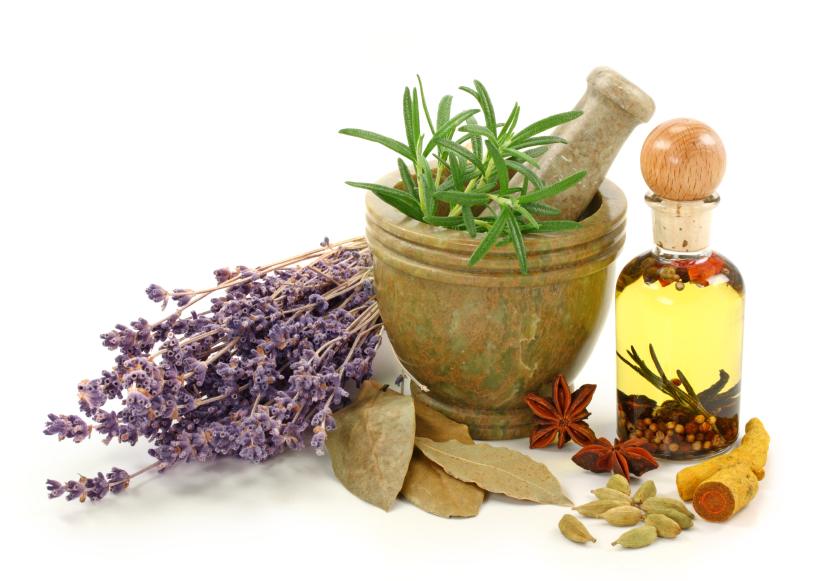Herbs and spices are the foundation of every well-prepared kitchen, and they are also one of the best parts of any garden. The words “herb” and “spice” are often used interchangeably in the kitchen, and often between gardeners. But just what are the key differences between herbs and spices? And how does this affect your ability to grow the seasonings that transform your culinary experimentations into a truly delicious dining experience? There are several subtle differences that can lead to a better understanding of the definition of herbs and of spices.
As you undoubtedly know, herbs and spices are seasonings that are derived from plants. The exception to popular food seasonings would be salt, as salt is a mineral that is not derived from any plants.
The Definition Of Herbs
Herbs are seasonings that are derived from the leaves of plants that fit into the herbaceous family. Herbaceous plants could be perennial, biennial, or annual; this means that some of your herbs will survive throughout the year and continue to thrive each spring, and others will need to be replanted every spring.
Herbaceous plants do not have a woody stem, and the leaves and stems that they do have typically die down towards the end of the growing season. Your perennial and biennial plants will develop new growth at the start of the next growing season, as the roots tend to go dormant throughout the coldest parts of the year.
Herbs typically prefer temperate climates, and as such have been found to originate from countries like England, France, and Italy.
Even some of the most seasoned gardeners are surprised to learn that some of their gardening staples actually fall into the herbaceous category. Here is a brief list of some of the more surprising herbaceous plants that may not necessarily be considered as herbs with a culinary purpose.
- Carrots
- Parsnips
- Potatoes
- Ferns
- Hosta
Herbs, like spices, are typically best used when fresh. They can, however, be dried and saved for use when they are needed during the winter months. Plant nurseries and home improvement stores fill up with an array of herb plants that include some of the more popular kitchen additions, including some of the following.
- Basil
- Chives
- Lavender
- Marjoram
- Oregano
- Parsley
- Peppermint
- Rosemary
- Sage
- Thyme
Herbs are very often used in larger amounts than spices, which means that even the most potently flavored herb is not as nearly influential in cooking as spices are. Interestingly enough, some plants are used in cooking as both herbs and spices. An example of this would be coriander, which is also known as cilantro. The leaves and the seeds of the coriander plant are both used to add fresh flavor and unique tastes to a range of dishes. Dill is another plant that serves a dual herb and spice purpose, providing both leaves and seeds for culinary seasonings.
New “Survival Herb Bank” Gives You Access to God’s Amazing Medicine Chest
A lot of herbs can be used both as an additive in the culinary arts and also can be used for their medicinal value. For example, the mint family of plants has a beautiful aroma and flavor that adds zest to a variety of baked goods and even curry dishes. Peppermint tea has also been shown to ease stomach upsets and discomfort, and of course chewing a few peppermint leaves can result in deliciously fresh breath.
The Definition Of Spices
Spices are seasonings with intense flavors and aromas. They are typically obtained from the bark, seeds, fruits, roots, and flowers of the plants. While herbs tend to better thrive in moderate climates, spices are more frequently found to be growing in warmer climates.
The warmer climates are also often used to explain why there is so much more of an occurrence of spices used in cuisines found in these warmer climates. There are several spices that have key antimicrobial properties, which can help to better preserve meat that would otherwise be susceptible to spoiling as the temperatures rise. What this means is that not only are the spices used to add unique and intense flavors to dishes, but they are used as natural preservatives.
Here are just a few examples of the types of spices that you could potentially grow, and the sources of them:
- Bark-sourced spices include cassia and cinnamon
- Dried flower bud-sourced spices include cloves
- Stigma-sourced spices include saffron
- Seed-sourced spices include black pepper, mustard, cumin, fennel, and coriander, nutmeg
- Aril-sourced spices include mace, which is actually sourced from nutmeg
- Root-sourced spices include ginger and turmeric
Vanilla is a rather unique spice in that it comes from the underdeveloped seed pod, or fruit, of a very unique orchid plant. Vanilla is highly prized for its intense flavor that is used in just about every cuisine around the world.
A lot of spices can be found blended together in order to produce a unique combination of flavors and aromas. Garam masala and curry are two such spice blends that are incredibly popular in Indian and other Asian cuisine.
Growing Unique Herbs And Spices
With the cost of fresh herbs and spices often bordering on the outrageous, gardeners around the world have taken to growing their own delicious kitchen essentials. While some herbs are found in just about every windowsill box and veggie garden, there are some that can be easily grown, some that even veteran gardeners may not be aware of.
- Cinnamon. The cinnamon tree grows best in tropical environments, so if you live in a more arid area like Texas or Nevada then it is not going to be an exceptionally content tree. If your climate leans more towards the sub-tropical, then you may have really good success growing a cinnamon tree for its delicious bark. Cinnamon is something of a slow grower but is otherwise relatively easy to keep thriving in a non-acidic potting soil.
- Fennel. Loose compost-rich soil will provide the ideal growing environment for fennel. Not only will the seeds provide you with a delicious licorice-like flavor, but the bulb of the plant can be eaten like any other root vegetable. Fennel grows best from seed and is a relatively swift growing place.
- Ginger. Surprisingly few gardeners grow ginger, which is baffling considering the cost of this fragrant and tasty little root plant. It can take up to a full year for a ginger plant to be ready to provide harvestable roots, but once established, you’ll find that your ginger plant provides you with an almost endless supply of roots to use in your culinary adventures.
There is a vast variety to be found in herbs like mint and basil so give a bit of consideration to growing something that is a little bit unique and strays from the norm. Pineapple mint or even chocolate mint can offer a delightful alternative, while cinnamon basil will make a spicy addition to your herb collection.












